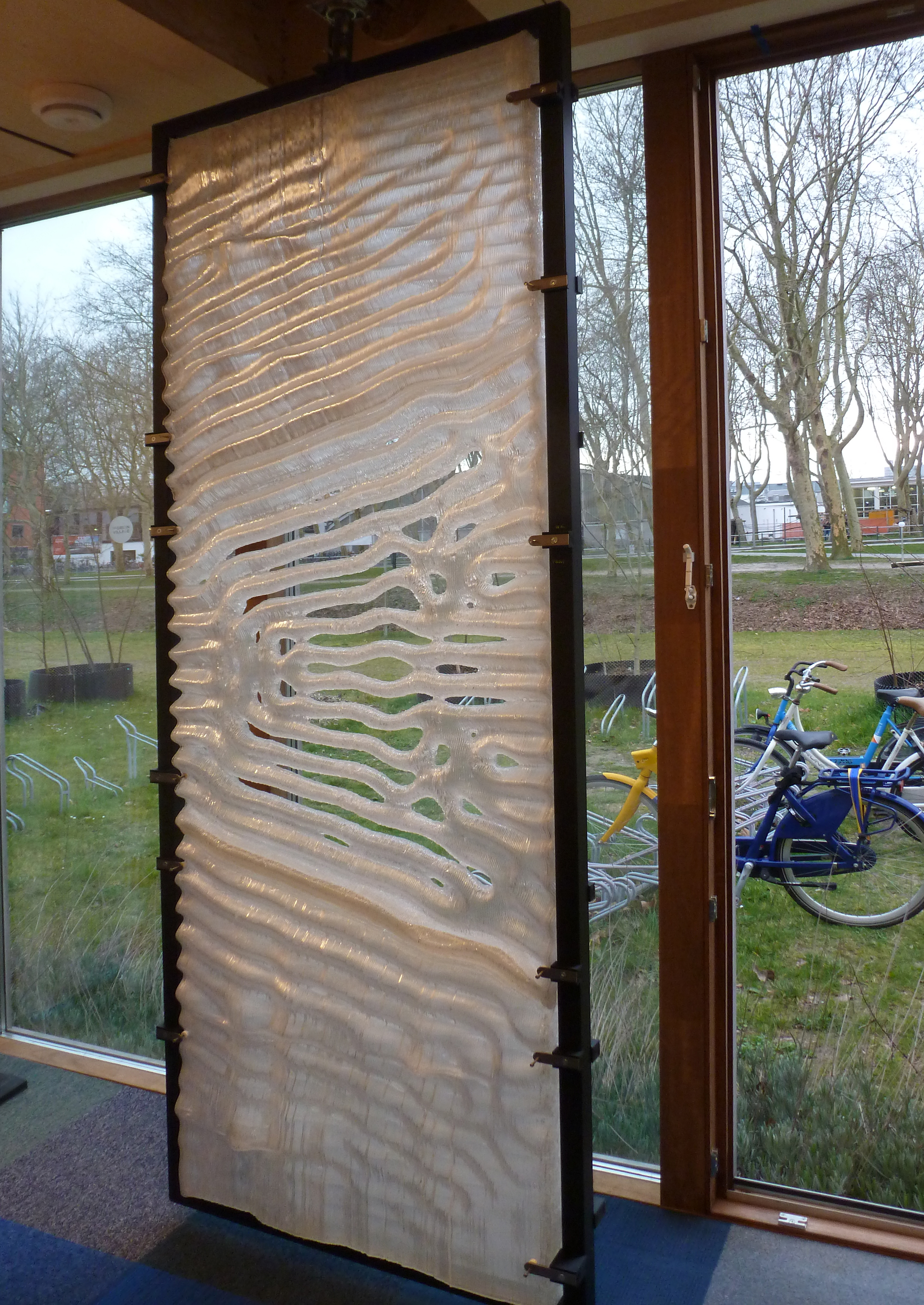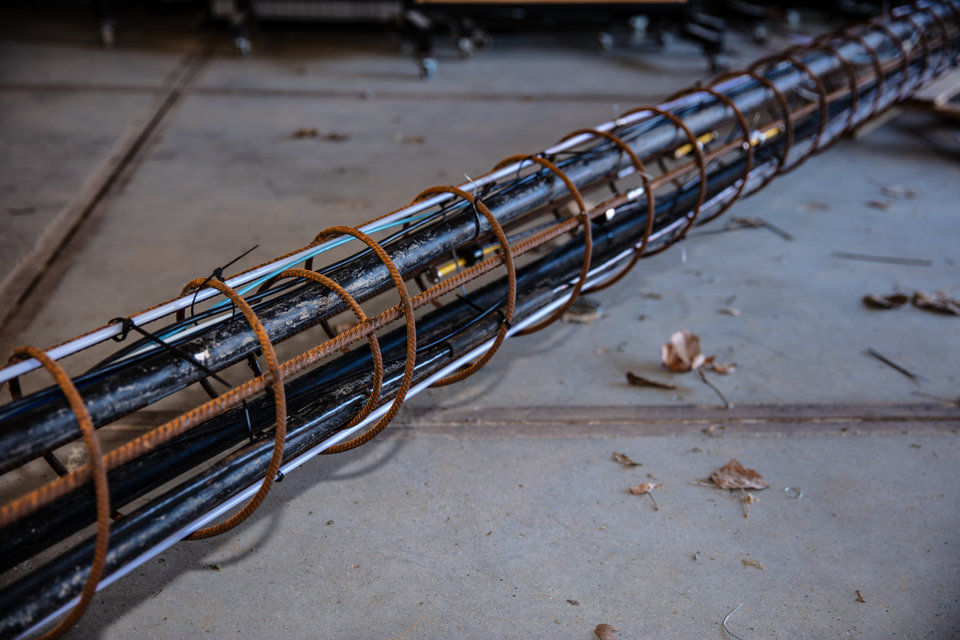A hundred years ago, dark stone walls were already placed behind glass in building spaces to longer retain heat from the sun. A team from the faculty of Architecture gave this 'trombe wall' a modern twist.
A trombe wall can ensure a much lower energy consumption of buildings. In the DoubleFace 2.0 research project state-of-the-art technologies breathe new life into this age-old heat control method.
The light-transmitting, 3D-printed DoubleFace 2.0 uses aerogel as an insulator and 'phase changing material' (PCM) as a material that buffers heat. The PCM changes to the liquid phase as a result of heating, allowing more light to penetrate, and gives off the heat when it solidifies. "The wall captures the warmth of the sun in winter and stores it in the phase-changing material," explains researcher Martin Tenpierik. "Because the system rotates, it can release the heat in the evening to the space behind it."
Maximum amount of energy
Together with his colleague Michela Turrin, Tenpierik has spent years researching how to perfect two-sided elements. After being granted a STW subsidy, the researchers followed earlier computer simulations with two years of extensive testing, using heat flows to investigate how the wall can collect and emit the maximal amount of energy without the material overheating. This led to the design of a prototype measuring 80 x 240 centimetres. A robotic arm printed the complex geometry of the wall from transparent PET-G – a type of plastic used for drink bottles. Due to the size of the wall, three stackable elements were produced. The front and back of the wall are separated. One side is filled with a 2.5 cm thick layer of phase change material (PCM), the other side with 1 centimetre of translucent aerogel.
To avoid the PCM circulating when it becomes fluid after being heated, the elements are horizontally segmented. To improve heat diffusion, the surface of the elements is in relief. The wall is also thicker at the top, as this is where the heat is concentrated, and at the bottom, where the most sunlight shines. Holes in the middle of the panels offer a clear view through.
Salt hydrates
The researchers used salt hydrates as PCM. These hydrates have a low melting temperature of between 23 and 27 degrees Celsius and are also affordable, incombustible and recyclable. Research into different types of buildings has revealed that in the Dutch climate, the modern Trombe wall can realise approximately 36% energy savings on heating. DoubleFace is able to generate similar energy savings on cooling during the hot summer months, when the two-sided wall is positioned the other way around.
Despite the promising performance, it will be a while before we see a large-scale market introduction. Primarily the 3D printing process is expensive; mass production using moulding techniques could help cut costs. ‘A low-tech solution with stacked PET bottles is also conceivable’, says Tenpierik. A lightweight variant in the form of a double-sided curtain or Venetian blinds is another option currently being researched.
The 3D printed prototype is currently on display in the Office Lab on the terrain of the Green Village. Here, the trombe wall is equipped with sensors for temperature, heat flow, and air velocity. The 2.40-meter-high construction is suspended from an integrated system, to also test how DoubleFace could be used within existing building systems. At the same time, user valuation of the impact on the space is recorded. The subsequent data will be collected over the period of a half year.







